The Atari Portfolio will always have a soft spot in my heart. Ever since I saw it featured in the movie “Terminator 2: Judgment Day”, I knew I had to have one. Fortunately, I only had to wait a month, at which point a friend offered me his. (Good things come to those who wait!)
This is my “Pofo”, running an imitation of the PIN program shown in the Terminator 2 movie.
If you look closely at the design and styling of this machine, it will probably not surprise you to find out that it came out at the tail end of the 1980s – 1989, to be exact. The physical look, the Atari logo, the chiclet keyboard, and the screen are all signs of the era. Speaking of the screen, it’s not backlit, but – similar to the Game Boy that came out the same year – it’s a reflective monochrome LCD. Another similarity to the original DMG Game Boy is the power source: while you can plug in a “wall wart” for external power, almost nobody did this; instead, they used commonly-available AA batteries. Unlike the Game Boy, however, this can run DOS!
DIP-DOS 2.11 was a version of DOS that came out between IBM DOS 4.0 in 1988 and DR-DOS 5.0 in 1990. While the “DIP” in “DIP Research” officially stood for “Distributed Information Processing”, it also happily coincided with the first letter of the three founders: David, Ian, Peter.
So how do you get data on and off this thing? Well, here’s the method I’m still using to this day:
You may ask how someone could possibly use a machine like this productively, in the post-parallel port, 64-bit era. Well, this may also not surprise you (if you read any of my other posts), but I keep old laptops with parallel ports around. I also have a PCI Express card in my primary computer that gives me a standard RS-232 serial port as well as a parallel port. Lastly, although I’ve successfully used the File Transfer program that originally came with the Portfolio (on both 3.5 and 5.25 disks), I found a more modern equivalent called “transfolio” that works just fine with my newer computers. So, except for the GIGANTIC size of this parallel-to-Portfolio adaptor, it’s actually quite a breeze to transfer files, and not cumbersome at all.
And the files transfer slowly, but that’s fine, because I only have 32,768 bytes on my expansion memory card, which requires a button battery that I have to remember to change every few years. 1980’s tech at its finest.
If you turn the Portfolio upside-down, you’ll see some of the expected information, such as serial number and model information. (I suspect my unit was made in 1990, based off of the serial number). You’ll also see the battery compartment. The whole unit has a sort of a rubberized finish to it, which gives it a true premium feel (note that a lot of my vintage ThinkPads have a similar finish, which I really like.) This feel was reflected in the price: $400 in 1989 US Dollars, which is roughly $830 today. However, in 1989, there was NO way a parent would buy something this expensive for their kid, but today it’s sort of expected with $1,000+ phones.
As far as maintenance, I’ve owned this machine since early 2009, and the only maintenance I needed to do was add exactly one drop of oil to the metal part of the hinges. For the first few years I had the Pofo, it would make an awful screeching sound whenever I opened it. It was roughly a mix between “nails on a chalkboard” and “Grandma’s creaky rocking chair”. Otherwise, I got away with just routine battery changes, including the one in the 32KB memory card.
The good news is that there are at least two Atari Portfolios left existing in the world. In fact, they’re still on eBay occasionally for roughly $100, the same as 5-10 years ago. I also went to the Vintage Computer Festival this year, where (for the first time in my life) I saw another Atari Portfolio, plus its original box, which I had never seen before.
Bonus: Here are some really old pictures (from 2010) of my Portfolio transferring files to my 486 (as well as vice versa – I clearly downloaded a Unit Conversion program, because that doesn’t come with the Pofo). Note the OmniKey Ultra (alps switch) keyboard and the decked out Game Boy Advance – I was doing the “retro computing/gaming” and “mechanical keyboard” thing 3-5 years before everyone else came in and flipped the markets upside down!

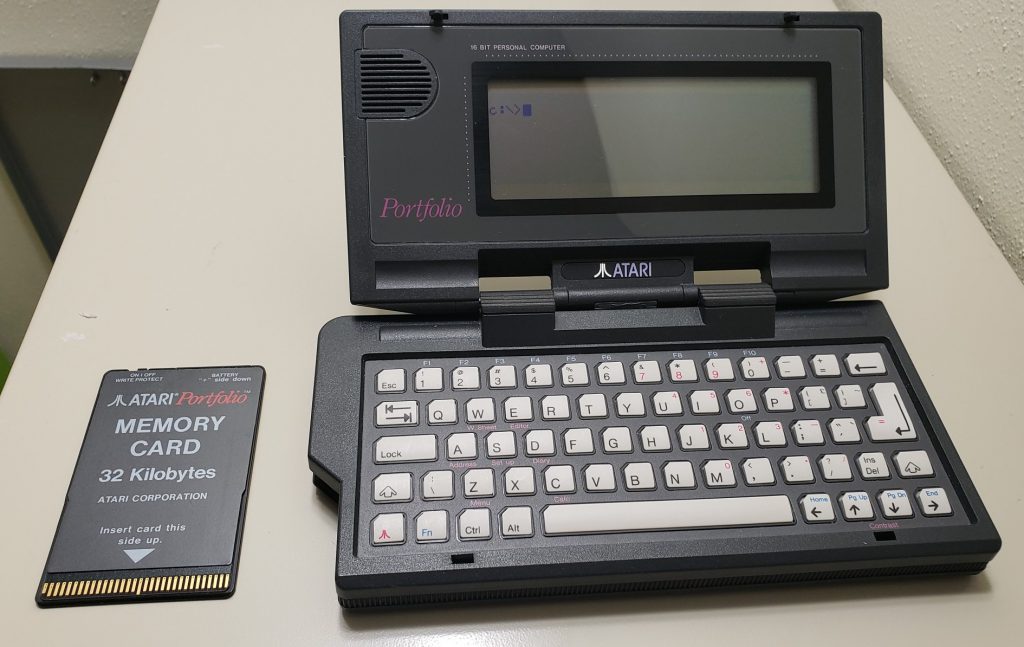
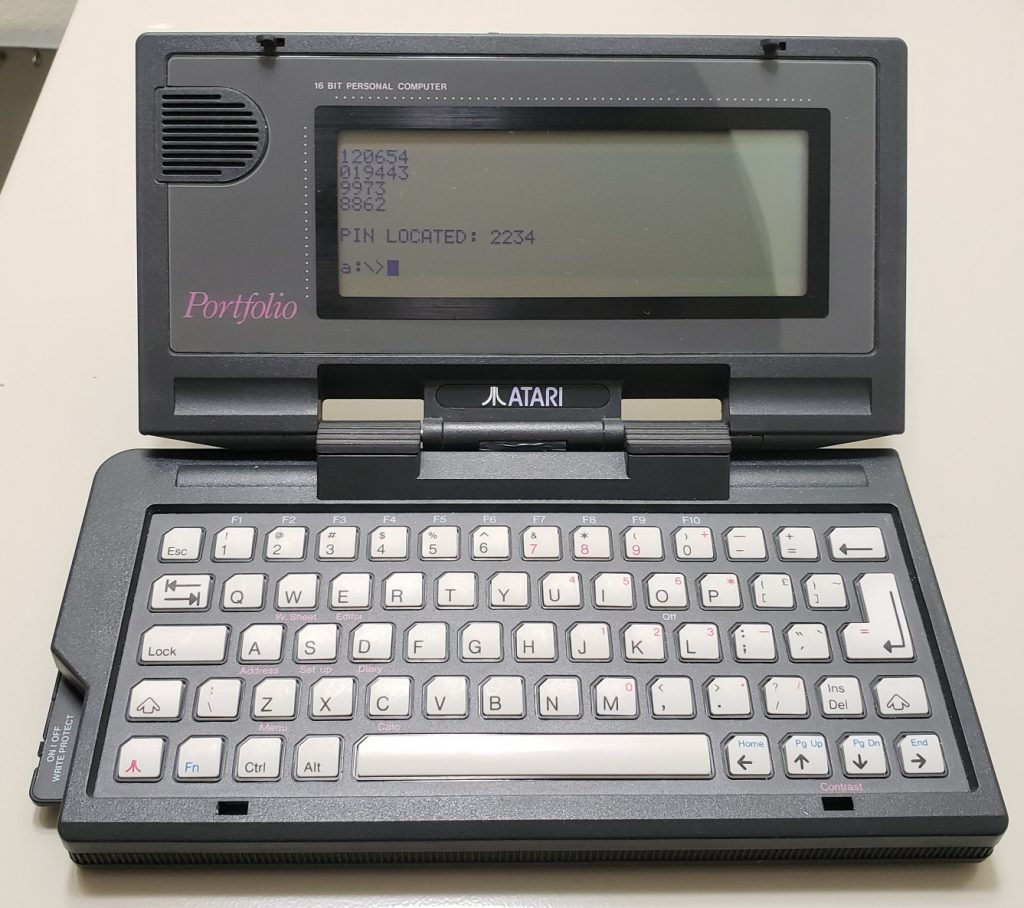
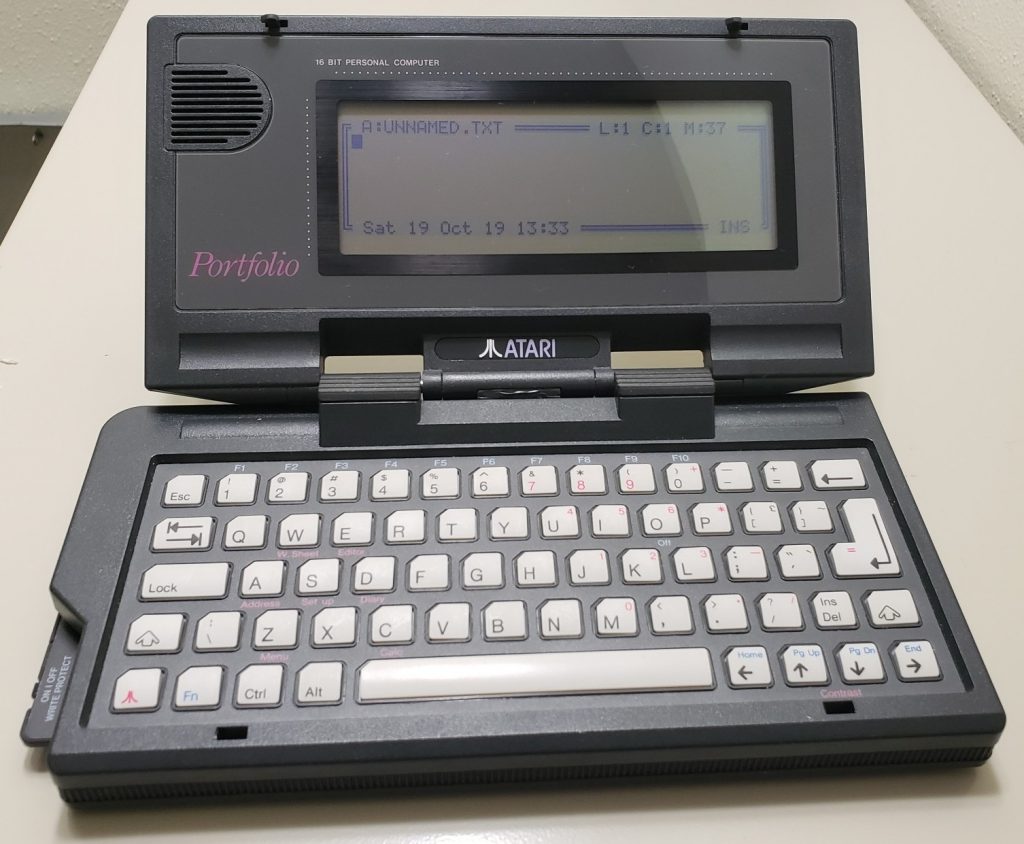
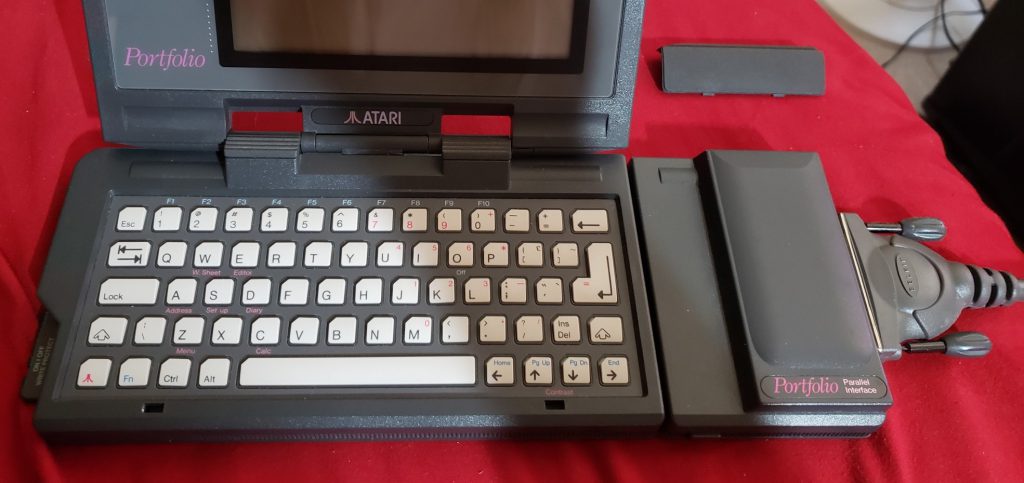
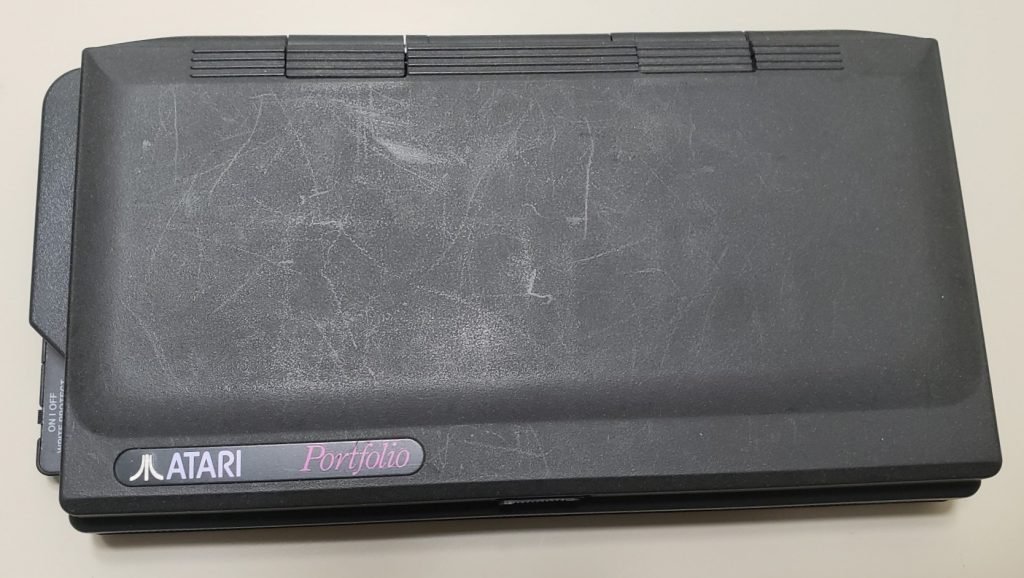

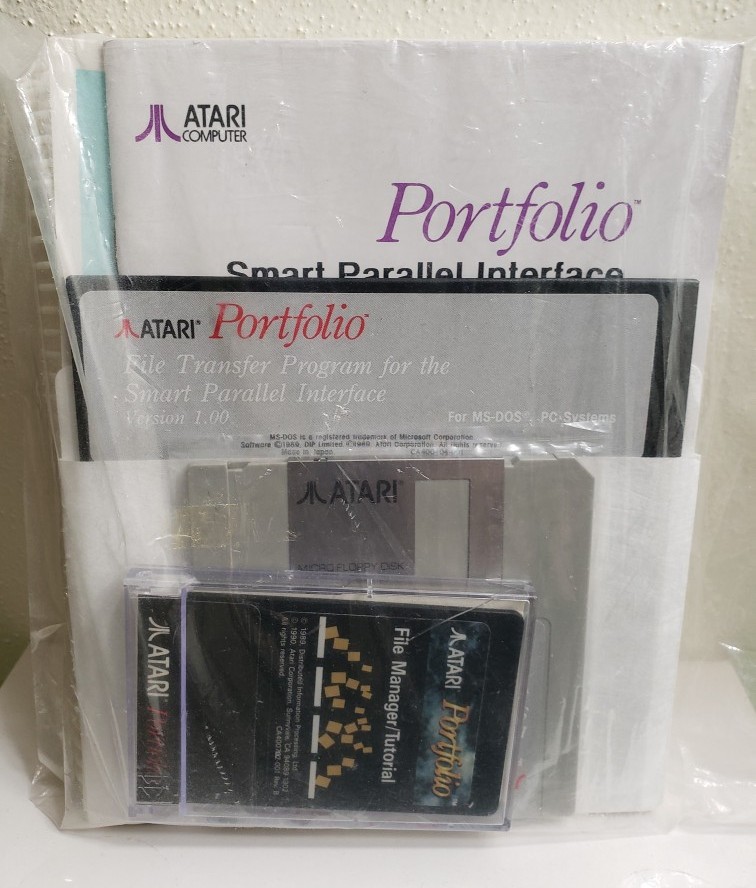
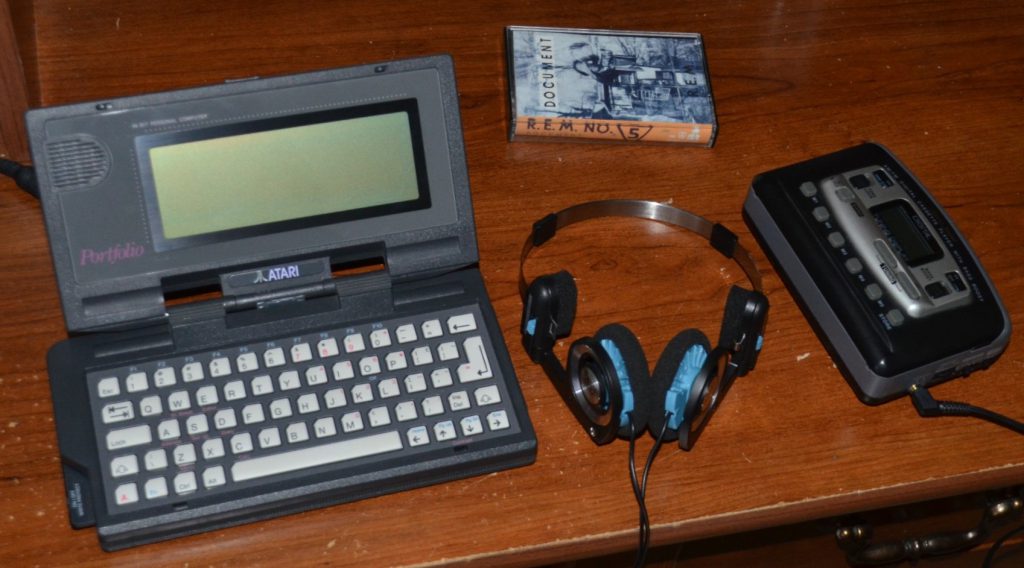

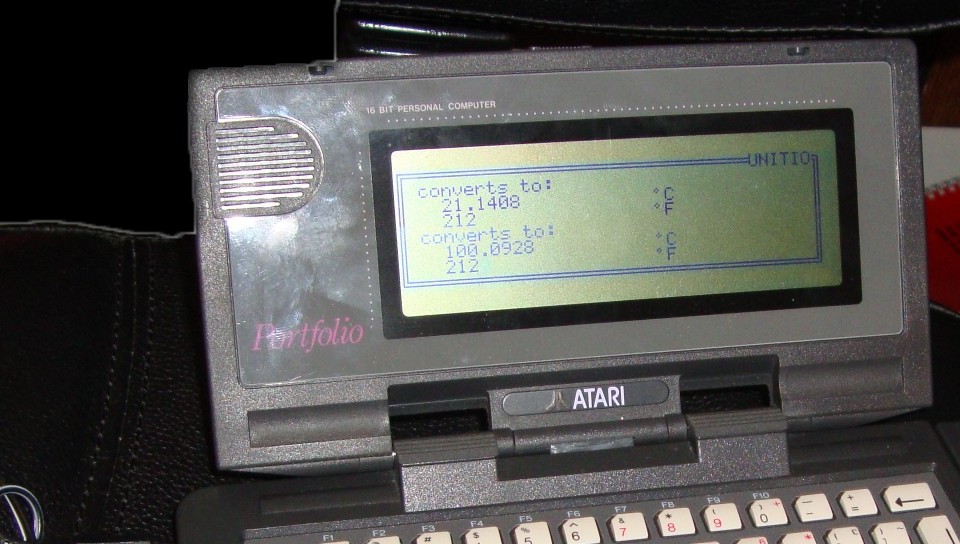
Recent Comments